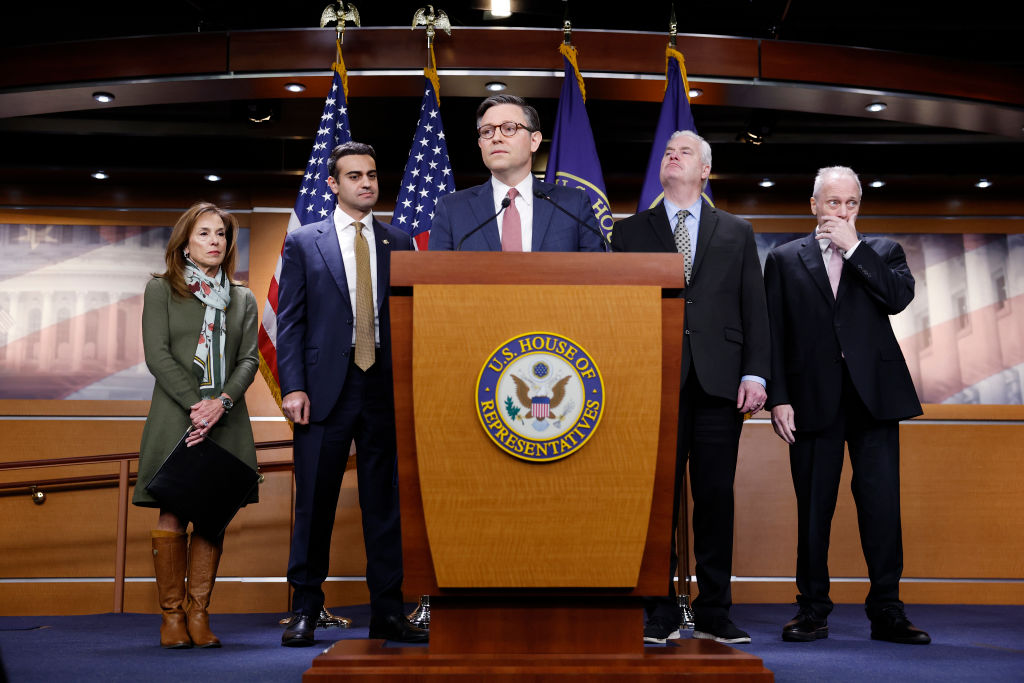
The red state denial of fiscal responsibility is manifest today as misguided voices champion the economic virtues of red states. For instance, President Donald Trump and the GOP have threatened to block disaster relief for Californian wildfires, to obstruct the return of federal relief for state and local tax payments, and to roll back the massive industrial investments from Biden-era legislation. Now, as GOP leaders in both chambers advance their budget proposals, Republicans are pursuing other politically punitive budget measures before the March 14 debt funding deadline.
[time-brightcove not-tgx=”true”]
However, blue states would do well to remember that it is they who are picking up the bill for red states. Before Republicans start criticizing Democrats about their dependence on federal dollars, a quick review of the facts may be warranted. For instance, while federal dollars to New York represented 38% of its state budget in 2022, Texas received the same proportion, and Florida received even more (40%). Similarly, much attention from the GOP is given to Medicaid funding in blue states such as Illinois, but they conveniently ignore the fact that Texas, Florida, Georgia, Louisiana, and West Virginia, among other red states, see a greater share of the cost of their traditional Medicaid programs covered by the federal government.
A recent Wall Street Journal editorial called blue states the “wards of Washington” by questionably only looking at federal spending to blue states, ignoring the flow of federal funds to red states and oddly forgetting to analyze the other half the national income statement, matching expenses with revenues—that is tax revenues collected.
We have compiled a first-of-its-kind comprehensive five-year assessment of state-by-state inflows and outflows of federal funds and found the balance of contributions and receipts is not even close, red states are still propped up by blue states. After our researchers analyzed federal expenditures, including the Biden era infrastructure initiatives, Medicare/Medicaid, military spending, government contracts, standard grants, etc., against federal revenues across all 50 states, it is clear that blue states are funding red states.
From 2018 to 2022, individuals and organizations from blue states contributed nearly 60% of all federal tax receipts but only received 53% of all federal contributions to states in the form of either direct payments, grants, contracts, or wages. Meanwhile, red states were only responsible for 40% of federal tax receipts but received 47% of all federal contributions to states. A 7% differential that in effect equates to a more than $1 trillion transfer payment from blue states to red states, amounting to $4,300 per capita, compared to the instance where their respective fair shares were paid.
In dollar terms, while federal contributions to blue states amounted to $11.6 trillion compared to $10.3 trillion across red states—or $71,500 and $67,000 per capita, respectively—federal receipts from blue states amounted to $10.7 trillion compared to $7.3 trillion from red states—or $58,500 and $45,000 per capita, respectively. Among the top 20 states realizing the greatest net flow of funds, calculated as federal contributions to states (inflows) less federal tax receipts from states (outflows), 14 were red states, while 13 of the bottom 20 states are blue states. Headliners of the top 20 include West Virginia, Mississippi, Kentucky, and Alabama. Leading the bottom 20 are states such as California, Washington, Massachusetts, and New York, all critical hubs of business, investment, and innovation.
Digging deeper into the component parts of federal contribution, red and blue states received similar dollar amounts in direct payments on a nominal ($6.9 trillion) and per capita ($42,900) basis, much of which come in the form of payments from Social Security, Medicare, and public assistance programs, such as the earned income and child tax credits. The red and blue states also receive similar amounts for military and non-military wages (excluding the U.S. Post Office, which is self-funded) on a nominal ($650 billion) and per capita ($4,900) basis.
Another major geographic injustice favoring red states is the transfer of military muscle south. Despite Department of Defense investments into key military contractors in many blue states, such as Virginia, Maryland, and Connecticut, red states, such as Florida, Georgia, and North Carolina, have overwhelmingly benefited from military base expansion and relocations because of the Base Realignment and Closure (BRAC) process established by Congress.
Since the BRAC Commission first began their reviews in 1988, the proportion of bases located in red-state-dominate regions (i.e., Southeast, Southwest) increased by 6 percentage points compared to a decrease of 7 percentage points in blue-state-dominate regions (i.e., Northeast, Mid-Atlantic)
The negative economic impact of such shifts has cast a shadow over many cities and regions for decades. For example, the closure of the Philadelphia Naval Station resulted in an estimated loss of 35,000 jobs; a +25% increase to regional unemployment; a $1.2B in loss of wage and non-wage income; a $2.1B loss in gross regional product; and a loss of $37M in state tax revenues
Finally, blue states did receive more in COVID-19 relief funds, but red states have disproportionately benefited from Biden’s signature legislation—IRA, CHIPS, IIJA—by as much as fivefold.
It should be acknowledged that blue states do come out ahead on a few fronts. For instance, blue states receive more funding from grants on a nominal ($2.3 trillion in blue states vs. $1.7 trillion in red) and per capita ($13,200 vs. 12,300) basis, much of which fund Medicaid; Special Supplemental Nutrition Program for Women, Infants, and Children; Child Care and Development Block Grants. They also receive more financial assistance for the construction, maintenance and operations of state highways and ground transportation.
Plus, blue states receive more in federal contracts on a nominal ($1.6 trillion in blue states vs. $1.1 trillion in red) and per capita ($10,500 and $6,650) basis, the majority of which support the procurement of critical materials, supplies, and equipment for the Department of Defense; the medical and scientific research coordinated by the Department of Health and Human Services; and the well-being and health of America’s veterans through the Department of Veterans Affairs. However, these blue state advantages are overshadowed by the total picture above.
As Congress prepares for the budget and debt debate showdown next month, they must deal with the current facts and not historic fantasies.



